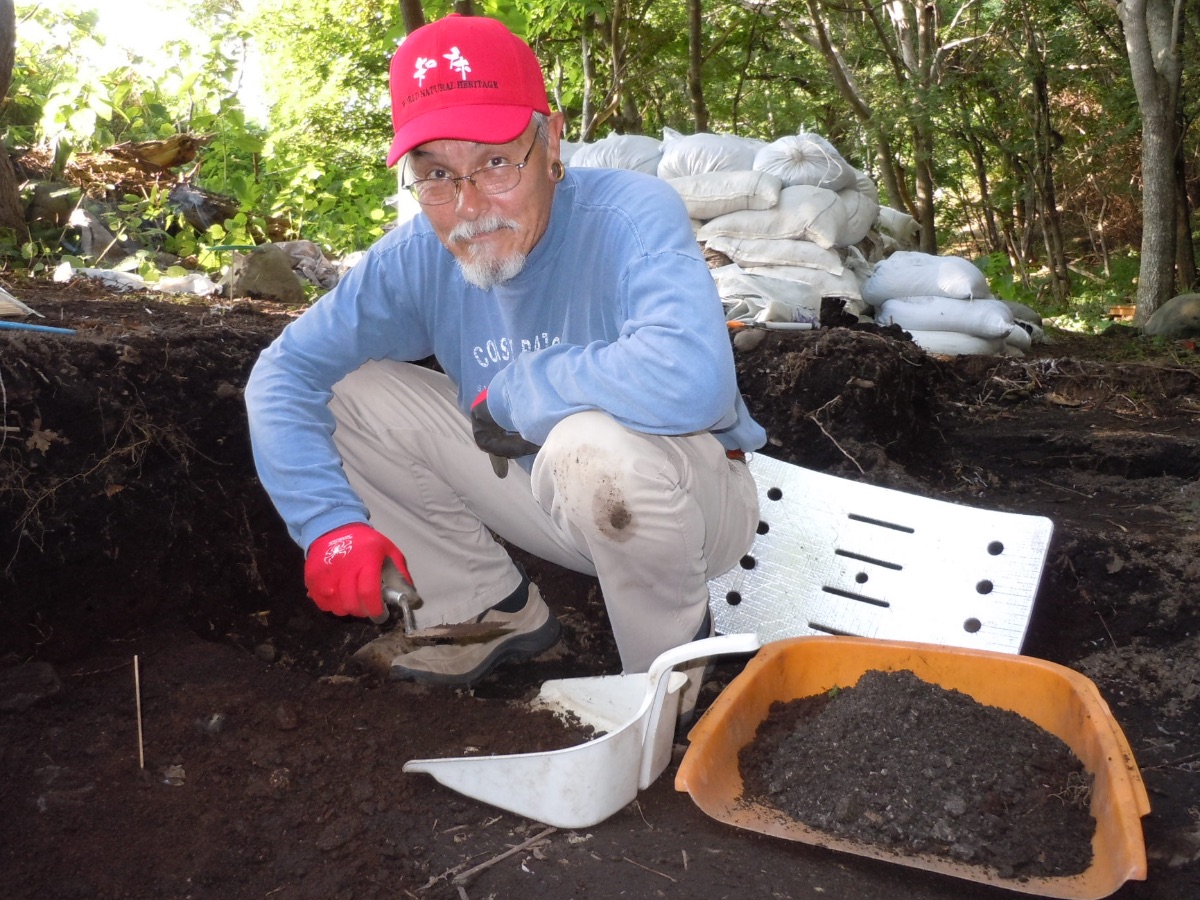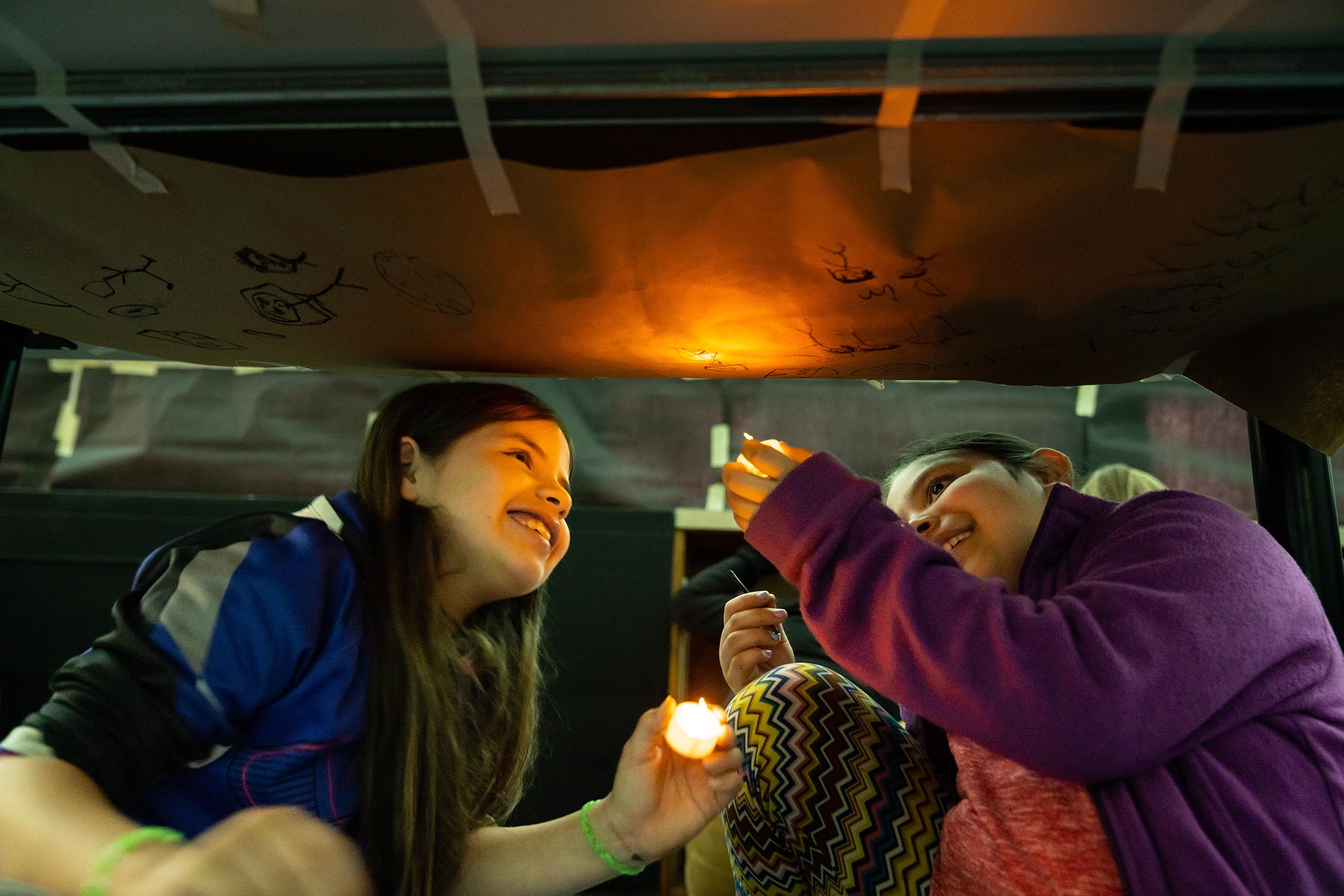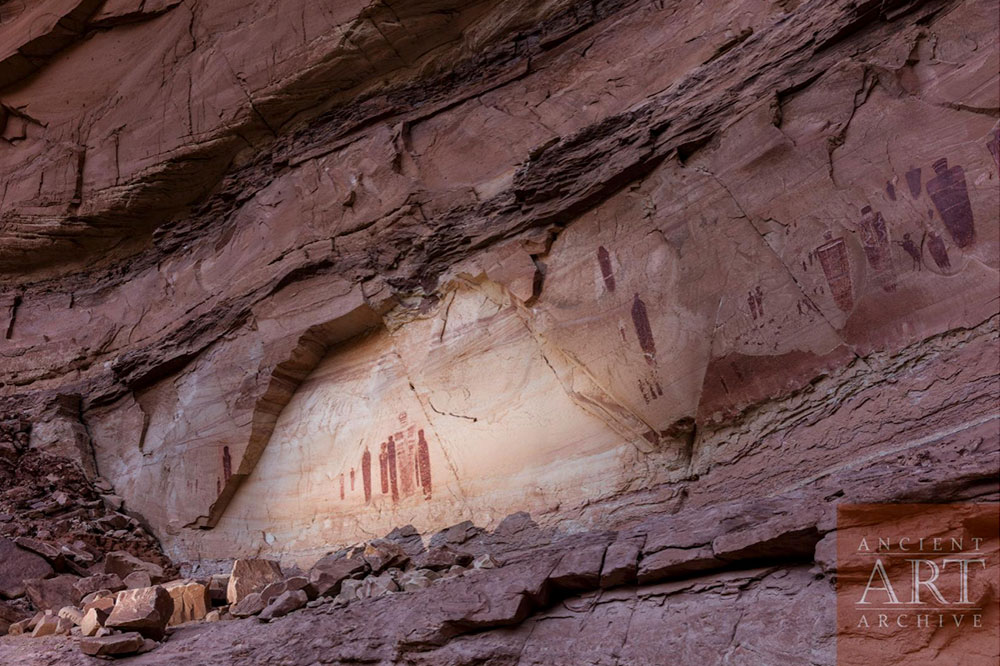At the Ancient Art Archive, we always knew we wanted the Mural of America stories to be told from an indigenous perspective, so we were beyond thrilled when Dr. Joe Watkins agreed to join our team to engage Native communities in building out each site’s archaeological and cultural content.
Joe’s gentle personality, Choctaw ancestry, archaeological expertise, and decades of experience conducting collaborative work with indigenous communities make him ideally suited for this project. Read on to learn more about Joe and his journey!

Joe, what inspired you to become an archaeologist?
When I was a kid, I would spend the summers with my grandmother out in the country on the edge of Cypress Swamp in southeastern Oklahoma. It was kind of fun. We had no electricity, We drew our water from a spring in the back, bathed in the river, and my grandmother cooked on a wood stove. We went to sleep at sundown and got up at sunup to hunt, fish, explore, and do everything an eight- or nine-year-old kid would want to do without much supervision at all. Being the youngest of the grandchildren, I also spent the most time with my grandmother, and learned about Choctaw uses of plants and animals.
One day when I was about ten years old, I found an archaeological projectile. This was way before I became an archaeologist and knew better than to pick up and remove artifacts, so I grabbed it and ran to show my grandmother. She only spoke Choctaw, but through my cousin, she explained that particular point was not a part of our Choctaw history, but of the people who lived here before our people moved here in Southeastern Oklahoma. (I later learned the people who were in Southeastern Oklahoma before the Choctaw were the ancestors of the Wichita and the Caddo). She felt that it was the unwritten history of the people before us, and that it was important that we not let that unwritten history get lost. That experience got me asking questions and looking for clues about the past, and I’ve never stopped!
What was the practice of archaeology like when you started your career?
Well, it’s kind of interesting that in August of 1969, just before I started at the University of Oklahoma, Vine Deloria, Jr. published his book, Custer Died for Your Sins. And that same August, Playboy magazine printed excerpts of Chapter Four of Deloria’s book, where he rails about anthropologists never having done or produced anything for American Indian tribes, just taken advantage of them.
When I read that, it made me stop and think about what I was about to do, and really, it planted the seed about what my work in archaeology would be. I determined at that point that I would not be one who took advantage of American Indians, that I wouldn’t try to tell them what their history was, and I would respect the knowledge they had to offer. And I also maintained my belief that archaeology was important work, because, like my grandmother had said, there was so much unwritten history to uncover that could help tribes better understand the deep times past.
So, I can really say from early on, I had to pretty much walk in the middle. Even today, after 50 years, there are some tribal members who will bring me to task for every bad thing that archaeology has ever done, and there are archaeologists who still believe that I can’t be an objective scientist when I say something that reflects my Choctaw Indian humanism. Occasionally, I feel like I’m not a part of either world. But most of the time, I feel like I’m part of the best overlapping parts of both worlds.
Could you explain more about these two perspectives?
When I first started archaeology, archaeologists were pretty much unaware of American Indians, or I should say they were unaware of American Indian concerns with the practice of archeology and anthropology. As the American Indian movement brought these concerns to light, many archeologists kept saying, well, if the Indians really knew and understood what we do for them, how much history we could give them, they would be glad to have us involved. It’s true that archaeology has provided a great deal of unwritten history about the people of North America and the cultures that were here before European contact, for example, some of the ways that the cultures adapted technologically and farming, the materials they collected, the great civilizations that existed at Cahokia, Moundsville, all the great mound areas in eastern North America.
Some tribes felt that archaeologists were saying, “You don’t know your history, but we do, and let us tell it to you.” And the tribes thought, “We don’t need you archaeologists to tell us what our history is because we have oral traditions, we have stories, we have ideas and concepts that go back to time immemorial.” And perhaps the most alarming issue was the archaeological practice of digging up their ancestors, putting them in boxes, in museums, and so on. Tribes called archaeologists “bone diggers.” Back to Vine Deloria, to paraphrase one of his famous quotes: “Warriors laid low by other warriors go to the happy hunting grounds, whereas warriors dug up by archeologists go to the museum.”
To draw attention to the problems that they had with archaeologists digging up their ancestral sites, the American Indian movement was protesting. They were going into archaeology classes in Colorado and taking over the classroom. They were interrupting archeological digs and actually burning shovels and field notes in bonfires.
So there was a conflict in perspectives about who could best tell the history, and really who had the right to control access to the history.
It sounds like you have always been working to bridge these two worlds. Could you talk more about that, and your work around developing ethical practices in anthropology?
My first reaction to reading all that was happening in the American Indian newspapers was to want to distance myself. I didn’t want to be a bone digger. I kept telling my professors I was not going to dig human remains in North America, I was going to go to Europe and dig up their ancestors and see how they felt about it.
But over the next couple of decades, the federal government started looking at the impact of the practice of archaeology on American Indians, and began to pass legislation around that. It was repatriation with the National Museum of the American Indian Act in 1989 and the Native American Graves Protection and Repatriation Act in 1990 that really forced archeologists to look at how American Indian tribes perceived the practice of archeology.
In the early 1990s, my dissertation research made the first attempt at examining the legal responsibilities and the ethical responsibilities to tribal people of practicing archaeology in North America. I created some artificial scenarios for archaeologists, like: “There’s an archeological site on public land that contains some very old materials. The tribes don’t want you to excavate, but the law gives you the right to excavate. What do you do?” There were additional scenarios based on time periods, and whether the site was on private or public land, whether or not the land owner was supportive, whether the tribes were supportive, and so on. The results of these surveys made it clear that the new laws were not yet having much of an impact.
But we kept working. I was part of the Society for American Archeology Task Force on Ethics that created the essays, guidelines and principles of archeological ethics that was accepted by the Society in 1996. And then I was Chair of the SAA Committee on Ethics for three years, really looking at the responsibilities of archaeologists to descendant communities, to education, to protecting archeological sites, and so on. We created and grew a community of American Indians with Ph.D.’s in archaeology. I worked with the Bureau of Indian Affairs and educated tribal members about mapping, archaeology, repatriation laws, and so forth.
Today, thanks to the efforts of so many people, and thanks to the impact of the generation of archaeologists who were trained after the repatriation acts, tribes have the ability to control whether a site is allowed to be excavated. Archaeologists are utilizing the tribes and tribal members for background material for archeological surveys. The tribes are becoming much more involved in preservation through the Tribal Historic Preservation Offices program with the National Park Service. While it’s probably not the type of archeology that they would do if they had total control, over 200 tribes have embraced compliance archaeology and have taken over various states’ responsibilities to protect tribal lands.
What’s exciting to you about the Mural of America project?
In 2009, while I was on a PBS show called Time Team America, I was struck again by the importance of unwritten history. We went to archaeological sites across the United States, and one of the areas I went to was Range Creek in Utah. We looked at the rock art murals, the panels, all the petroglyphs and pictographs. These rock art sites were historical, whether or not they were stories created by individuals, whether they were depictions of actual events, whether they were parts of ceremonies that were meant to bring events to happen. All these questions kept racing through my head, and the simplistic explanations that I heard didn’t answer them. Was this depiction of a hunting scene meant to make hunting better for one particular individual? Was it created to make a communal hunt successful? Or did one person actually take down an antelope that he had never gotten before, and he recorded it because he wanted everyone to see? So just personally, I think it’s going to be exciting to try to provide some answers, or ways of thinking about the answers, to some of those kinds of questions.
I’m also really excited about how the Mural of America allows me to continue bringing together the tribal people. Looking at the pictographs and petroglyphs and geoglyphs on a continent-wide scale shows us that the early peoples and the first peoples of this continent were aware of the landscape. They left images not only for their own communities, but for other communities. The Mural of America provides an opportunity to communicate the importance of these areas to the tribal groups across the United States, to recognize that these places are just a few of thousands of such places that are written on the landscape. All of these tribal people interacting with their landscape and creating things that said, “I am here. We are here. This is who we are.”
And from one last perspective, I think that the diversity of the cultural landmarks examined in the Mural of America can help bring all of us in this country together around the realization that we need to find ways to protect and preserve, and not let people destroy, this important history of North America, this tribal history of North America. I think if we can make that happen, and if we can think about the entirety of these panels and cultural landmarks within the contextual landscape, it will broaden the amount of understanding that people might have about what these sites mean, not only from an artistic perspective, but from a social and cultural perspective. This history is important not only to tribes, not only to the people who live in the area, but to all of us.
That’s why I really love this Mural of America project and why I’m so glad to be involved with it.




